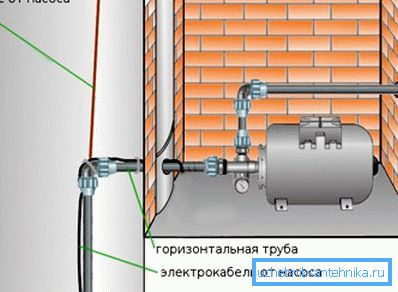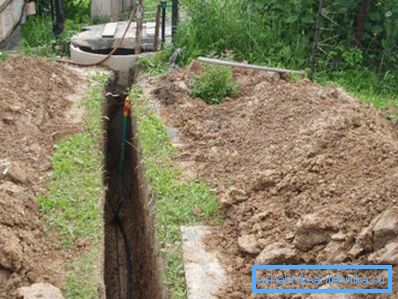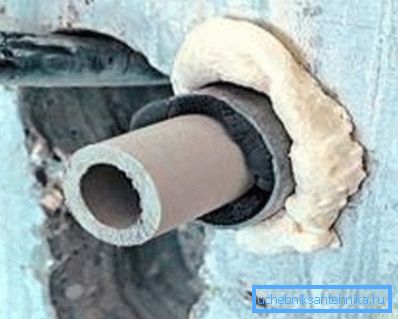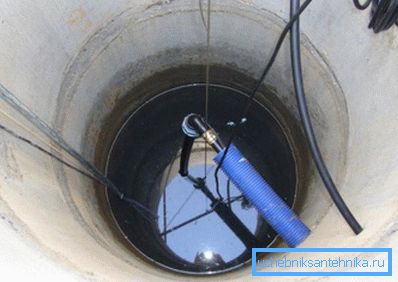How to conduct water from a well into a house - we do all
If you have a well on the plot, and there is no centralized water supply, then you should take care of uninterrupted water supply directly to the house. Even if it is a summer house, it is quite tiring to constantly carry buckets from the water intake to the house. And if it comes to watering the garden, then you have to carry dozens of buckets every day.
It is much easier to hold the water in the house from the well and forget about all the problems. Moreover, the work can be done by hand - no special tools, sophisticated equipment and professional skills will be needed.
The main thing is to carefully carry out all the steps that will be listed below. Agree, spend 1-2 days and get your own water supply - an attractive prospect.

The main stages of work
Like any serious project, the process of water supply should be divided into several stages. This will allow you to do what is needed at the moment, and not try to cover all the operations at once, which often leads to marriage and damage to the nodes. Doing everything in order, you can easily figure out how to draw water from the well to the house correctly.
Training
First you need to make a lot of calculations:
- The depth of water intake, a very important indicator that determines what type of equipment will be used in the well.
- The distance from the well to the house, on the basis of this figure, you will purchase pipes, insulation and cable, so the data must be accurate.
- The depth of soil freezing in winter, depends on the depth of the trench, which will have to dig for the construction of water supply.
- The approximate amount of water consumption, will depend on this type of equipment used.
- Place the pipe into the house - if during construction you have not provided for a hole in the foundation, you will have to make it with a special tool.
Next, you should prepare all the necessary materials and accessories.
From the tools you will need:
- Shovels for the device of a trench from a well to the house.
- Perforator for making holes in the wall of the concrete well ring and in the foundation, if necessary.
Also, in advance, stock up with the necessary equipment:
- Pump, its type depends on the depth of water intake and water needs. This may be a submersible vibration pump of the “Streamlet” type, a ground pump of the “Gidrofor” type or a full-fledged submersible pump of the centrifugal type, and the price may differ significantly depending on the manufacturer.

- Hydropneumatic tank, which will maintain the necessary pressure in the system, avoiding surges and water hammer equipment.
- Pressure meter, which will turn on the pump when necessary and the pressure gauge in order to see the pressure are also necessary attributes of the system.
- HDPE Pipe for bringing water from a well to a house with a diameter of 32 mm. Best of all, if from the beginning to the end there will be a continuous pipeline without connections, so you need to know the length and depth, plus do not forget to add 2-3 meters of margin.
- Insulation for pipes. Even if your pipe will lie below the freezing level, it is still exposed to cold at the entrance to the house. At a minimum, it is necessary to warm this section of the highway.
- If the laying is carried out above the freezing line, it should be insulated. It is desirable that along it lay also a heating cable that will prevent freezing even in the most severe frosts.
- Various knots for connection to the pump, the filter and so on.
Tip! The choice of equipment is a critical part, the durability of the system depends on its quality. It is better to purchase a pump known brand.
Excavation
It's all quite simple: you need to dig a trench of the required depth from the point of pipe exit from the well to the point of entry to the house. There is only one important note: to prevent stagnation of water in the pipeline, there should be a slight slope (about 3 degrees) in the direction of the well.
At the same stage, holes are made in the well ring and the foundation. You should not make them too large or small - and both will add you extra work.

Pipe laying
A sufficiently crucial stage, since the pipe will fall asleep, and any defects and leaks will lead to a huge amount of additional work.
The sequence of actions is as follows:
- If a submersible pump will be used, its hose is attached to the HDPE pipe, if the ground unit - in the well there should be a filter to clean the water from coarse impurities, from which the pipe goes.
- Particular attention should be paid to the place of the pipe exit from the well and the place of entry into the house, after laying the pipe, the place is sealed with a waterproofing solution. To ensure even greater reliability, the outer joints can be further treated with polyurethane foam.

- The foundation of the house near the entrance of the pipe must be further warmed from the inside with a sheet of expanded polystyrene.
- After the solution dries, the trench can be filled up.
Installation of equipment
To get water from the well to the house, first of all a pump is required, the system performance depends on it. Instructions for connecting it are required to study. And if you have any questions, it is better to invite a specialist.
When installing a submersible pump, you will need a durable cable and best of all, if it is made of stainless steel.

At the entrance to the house must be a water filter. The first launch and verification of the system is best carried out in the presence of a specialist.
Note! Do not forget that the size of the expansion tank depends on the needs for water and can vary from 10 liters to a ton.
Conclusion
We have disassembled how to conduct water from a well to a bathhouse, a house, a dacha. The nature of work may vary only depending on the type of pumping equipment (learn here how to find water for a well).
The video in this article will help to better understand the features of the work.